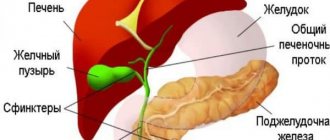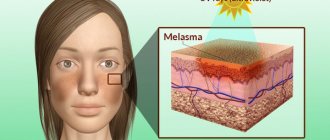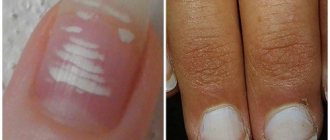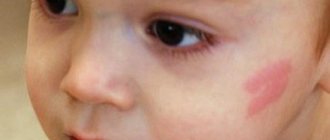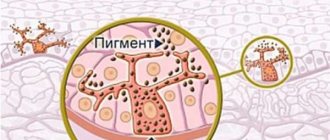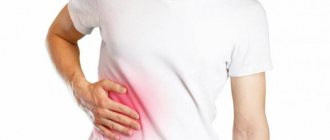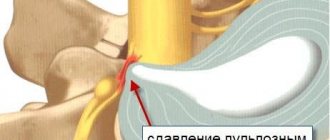Despite the fact that many consider diathesis to be an exclusively childhood disease, it is quite widespread among adults. If in the case of children the cause is an unformed immune system, then food intolerance and allergies can cause diathesis in adults. You can see photos of the manifestations of this disease below in the article. This condition is fixed at the genetic level and the main measures during treatment are aimed at relieving the manifestations and symptoms of diathesis - dermatitis, redness, rash, and so on. Also important is the prevention of allergic reactions - a special diet based on the exclusion of foods that cause allergies.
In this article you will learn what symptoms and signs manifest dermatitis in adults, what are the causes of its occurrence, methods of treatment and prevention of this disease.
What is diathesis in adults, photo
diathesis in adults photo
Today the opinion that diathesis is exclusively a children's problem is considered very widespread, and this cannot happen in an adult.
But this is far from the case, and diathesis in adults is no less common, despite the fact that its course is much easier than in a child. But, nevertheless, your lifestyle and diet will have to change. The most common cause of diathesis is food allergic reactions dating back to childhood. But it is often a problem to determine the connection between it and the body’s sensitization to foreign substances that occurs later in life. If several factors come together in one body at the same time, for example, poor air and water quality, eating disorders, unhealthy diet, stress, then the body immediately releases histamine into the blood. As a result, a characteristic rash appears on various parts of the body, and on it, in turn, additional inflammatory processes are superimposed.
The forms of diathesis are no less diverse. In adults, it can masquerade as other diseases and spread to other organs. The most traditional form of diathesis, characterized by a skin rash, is the allergic form of the disease. Due to the tendency to infectious diseases that affect the skin and mucous membranes, lymphatic-hypoplaxic diathesis occurs.
There is a high probability of metabolic disorders in people who have a hereditary predisposition to dermatitis, gastritis, or who have previously suffered from these diseases.
The development of dysbiosis is a characteristic feature of the gastrointestinal form. The cause of the rash in neuro-arthritic diathesis is nervous excitability. With hemorrhagic diathesis, the skin becomes especially sensitive to mechanical stress, and there is a tendency to bleed.
In adults, the clinical manifestations of diathesis are slightly different from children. First of all, this is a different localization (outer parts of the arms, neck, legs, palms). The initial manifestations are patches of flaky skin with extreme dryness. It becomes more sensitive on the hands and face, and when you touch it, a person feels severe itching and even pain.
Just like in children, in adults the mucous membranes are affected, a burning sensation appears under the eyelids, and sometimes swelling. The skin changes color over time and a crust forms.
Along with food, diathesis in adults can occur due to household chemicals, materials, odors, and dust. When it first appears, it goes unnoticed and disappears on its own, but with constant contact with the source of the allergen, the diagnosis is not treated, but takes on a chronic form, and all the symptoms become much stronger.
Source: sblpb.ru
How to identify the disease
Diagnosis of diathesis in adults includes the study of family history. It turns out that there are blood relatives with increased sensitivity to various irritants. The necessary tests are carried out, namely:
- general blood analysis;
- biochemical blood test (if a viral infection is suspected);
- skin biopsy (in some cases).
Differential diagnostics are carried out to exclude diseases such as dermatitis, pityriasis rosea, toxicerma, and syphilis. Often, the diathesis on the head in the form of a yellow-brown crust is mistaken for dandruff or symptoms of seborrhea; they are treated for these diseases and, of course, unsuccessfully. Therefore, high-quality diagnostics is very important.
Types of diathesis
Scientists, since there is no specific concept of “diathesis,” use several classifications of such pathology. Some believe that diathesis in adulthood can be of only two types - asthenic and hypersthenic, that is, the body’s metabolic processes are either slowed down or accelerated.
However, such a classification does not provide information about what diseases the patient is predisposed to. The more common classification is quite extensive, the most common types of disease are: allergic, neuro-arthritic, hemorrhagic, lymphatic-plastic.
Often, several types of diathesis are noticed in a person at once, the reason for this is the interconnection of all organs in the body. Allergic type. This type of disease occurs in almost 80% of cases. It is caused by contact with environmental objects or the intake of unusual foods or their excessive quantities.
That is, there are 2 reasons for the development of this type:
- The reaction of the digestive tract, the problems of which are reflected on the skin.
- Direct reaction of the skin to an irritant.
Any manifestation of an allergic type is characteristic of most other types of diathesis. Symptoms of allergic diathesis in adults are:
- dryness and itching of certain areas of the skin;
- redness and burning;
- acne, rash;
- tearfulness;
- inflammation of the mucous membranes of the eyelids and mouth;
- dandruff may appear, which is more indicative of an allergic reaction to a hair care product;
- Insomnia often develops, the person becomes irritable;
Often such symptoms are ignored, and the person thinks that he just ate something wrong. Any form of allergic disease, as well as disorders of the intestinal microflora, will be considered a complication.
For reference! Diathesis on the face most often occurs from overeating sweets, especially honey or chocolate, as well as from low temperatures. Diathesis on the arms or legs most likely developed from contact with washing powder or clothing.
The following manifestations are possible from the digestive tract:
- nausea;
- constipation;
- diarrhea;
- flatulence.
Neuro-arthritic. This type of anomaly rarely goes unnoticed until adulthood. More often than not, from the age of 2 months after the birth of a child, parents fight the disease in order to prevent even bigger problems. Symptoms of the disease occur due to nervous tension and stress.
Inextricably with psycho-emotional overstrain, there is a violation of purine metabolism, so the main symptoms include excessive obesity, unstable emotionality, increased body temperature, sweating, pain in the limbs and back.
A constant lack of appetite and abdominal pain may also indicate a type of diathesis. Complications of this particular type of pathology will include the following diseases: diabetes mellitus (non-insulin dependent), arthritis, rheumatism, gout.
Improper metabolism, together with a risk factor such as excess body weight, can lead to the formation of atherosclerotic plaques in the vessels, and, consequently, to problems with the heart and other internal organs.
Hemorrhagic. A type of disease caused by the seemingly causeless formation of bruises and hematomas, as well as the appearance of prolonged bleeding as a result of any minor injury. In this case, there may be no manifestations on the skin of the face or other parts of the body.
The cause of hemorrhagic type manifestations is considered to be congenital or acquired problems of hematopoiesis and structural features of the vascular wall. Congenital problems always begin in childhood, while acquired ones arise, for example, as a result of taking an increased dose of certain medications or due to hormonal imbalance.
In addition to traumatic or non-traumatic hemorrhage, symptoms may include:
- nosebleeds;
- uterine bleeding regardless of the menstrual cycle;
- discharge of blood in feces and urine;
- vomiting, sometimes with blood;
- pain in the joints.
Against the background of constant bleeding, general weakness of the body and dizziness are possible. Complications include problems such as anemia, paralysis, and problems with internal organs. In the future, an anemic coma is possible.
Lymphatic-plastic. This type, which is considered congenital, remains in adults only in 10% of cases. Starting at the age of three months and developing by 2-3 years, it passes by the age of 15 years of the child’s life. Those who are unlucky know about a feature that manifests itself with the following signs:
- disproportionate physique;
- long-term and complicated colds;
- general weakness of the body;
- enlarged lymph nodes, adenoid;
- redness and crusting on the cheeks, elbows and knees.
Usually, an adult already has a diagnosis in his medical record not of diathesis, but of thymic-lymphatic status, which implies underdevelopment of some endocrine glands. But those who have followed all the allergist’s instructions since childhood have every chance of living a full life.
Source: helperskin.ru
The main causes of diathesis in children
In some cases, the causes of diathesis in infants, older children or adults cannot be determined. But most often the disease is provoked by poor nutrition, hereditary factors or improper care of young children.
Heredity
In many cases, children will inherit the predisposition from their parents, especially for the hemorrhagic type of the disease.
The following is inherited:
- deficiency of blood clotting factors (hemophilia);
- deficiency or dysfunction of platelets (Werlhof's disease);
- allergic diseases;
- metabolic disorders;
- structural features of the skin and mucous membranes;
- endocrine diseases;
- disturbances in the functioning of the digestive system, in which the synthesis of food enzymes is reduced, the absorption of glucose or the digestibility of fats is impaired.
Nutrition
Often the cause of diathesis, both in infants and young children, is poor nutrition. The child's digestive system is functionally immature.
The body does not produce enough enzymes, and the intestinal walls are characterized by increased permeability.
As a result, the foreign protein is quickly absorbed into the blood and causes a response from the body.
The reasons for the predisposition are:
- incorrectly selected mixtures;
- introduction of cow's milk into the baby's diet.
- early introduced complementary foods;
- a large number of seasonal berries or fruits in the child’s menu;
- allergen products: nuts, honey, chocolate, eggs;
- introducing many new products in a short period of time;
- food not appropriate for age: sausage, shrimp, mushrooms, red caviar.
In order to avoid the appearance of a rash, especially if the baby is prone to allergies, it is necessary to keep a food diary in which to record data on the consumption of each product.
Breast-feeding
The optimal food product for a child in the first year of life is breast milk. But during lactation, a nursing mother needs to eat properly, since allergens enter the child’s body along with milk.
The most common manifestation of a rash can occur when a nursing mother consumes:
- citrus fruits;
- nuts;
- honey;
- chocolate;
- confectionery products;
- seafood;
- a large number of seasonal fruits or berries of bright colors.
Various diseases
The reason for the appearance of predisposition symptoms in a child may be different.
Namely, both hereditary and acquired diseases:
- allergy;
- bronchial asthma;
- infectious viral and bacterial diseases;
- diabetes.
Taking medications
The cause of predisposition can be not only the effect of the drugs themselves, but also the presence in their composition of dyes, preservatives, and flavorings, which cause an allergic reaction.
These medications include:
- non-steroidal anti-inflammatory drugs (including in syrups, for children);
- children's cough syrups;
- antibiotics;
- corticosteroids;
- anticoagulants;
- fibrinolytics.
Progress of pregnancy
A child’s predisposition to diathesis begins in the prenatal period.
This is influenced by factors such as:
- woman's nutrition during pregnancy. Eating too large portions of foods that cause allergies (chocolate, citrus fruits, nuts, brightly colored fruits or berries);
- eating too much meat and beans;
- long-term and severe toxicosis in early pregnancy;
- gestosis (toxicosis in late pregnancy, which poses a threat not only to the mother, but also to the child);
- Rhesus conflict;
- threat of miscarriage;
- uncontrolled use of drugs;
- unfavorable environmental conditions, air pollution with chemicals;
- bad habits;
- infectious diseases in pregnant women.
Causes
Most often, the cause of diathesis is a specific reaction of the body to the action of an allergen. And if everything is more or less clear with a child’s body, then why do adults who have never suffered from allergies before suddenly develop similar symptoms?
In fact, diathesis on the face is not a primary disease, but a consequence of existing disorders in the body, which may include:
- Intestinal dysbiosis.
- Poor nutrition.
- Disturbance of metabolic processes.
- Enzyme deficiency.
- Chronic diseases of the liver, kidneys, pancreas.
- Decreased protective functions of the body.
- Nervous tension, severe stress.
- Hereditary predisposition.
All these pathological processes can occur separately from each other, or form a complex of chronic diseases. Sometimes the listed conditions become a consequence of each other, for example, a person eats incorrectly and irrationally, the production of enzymes necessary for digestion is disrupted, food is not fully absorbed, but partially.
All this leads to the formation of waste in the intestinal walls, dysbiosis of pathogenic bacteria develops, and toxins begin to be produced that penetrate the bloodstream. The result is an allergic reaction, atopic dermatitis, diathesis on the face.
Source: dermexpert.ru
Symptoms and signs
To determine how to treat diathesis in adults, it is necessary to make a final diagnosis. Entrust this task completely to an experienced doctor, since adult diathesis has a number of features.
The adult form of diathesis has little in common with the external manifestations of the childhood disease. They may differ in location and characteristic features of skin changes.
In adults, diathesis is sometimes accompanied by several concurrent diseases, due to which the overall picture of the course of the disease seriously changes. This feature is not typical for childhood diathesis.
The most common feature of the disease is dermatitis. In the initial stages, the skin experiences dryness and increased sensitivity. If you lightly touch the skin, it can sometimes be accompanied by severe itching or redness. Gradually, the skin acquires an increasingly red tint, sometimes reaching burgundy.
Then a rash forms, after which dry crusts may appear with bright erosion underneath. Due to severe itching, an adult begins to actively scratch the affected area. But try to restrain yourself, otherwise it will lead to complications. Then it will be even more difficult to cure the disease.
With diathesis in an adult, the mucous membrane of the eyelids may suffer and conjunctivitis may appear. This is accompanied by a fear of bright light, uncontrollable tears or burning in the eyes.
Since the majority of diathesis problems are caused by an allergic reaction to food, when eating certain foods it is not difficult to determine what exactly led to the problems. Try to write down the foods you consumed before the unpleasant manifestations of diathesis began. Be sure to tell your doctor about them.
In addition to food, allergens can be household items, detergents, animals or plants. The clinical manifestations of diathesis in adults are somewhat different from those in children. They often have a different localization. In adults, the rash almost never occurs in the area of skin folds and on the face, but this is compensated by the development of hyperemia on the outer parts of the arms, palms, neck, and legs.
First, areas of peeling and increased dryness appear. The sensitivity of the skin on the face and hands increases; when touching it, the patient feels scabies, itching, and sometimes pain. Diathesis in adults, similar to that in children, is characterized by damage to the mucous membranes of the conjunctiva, a burning sensation is felt under the eyelids, and in some cases swelling is observed in the affected areas.
The skin changes color from soft pink to dark red and cherry, and after a certain period a crust forms. Since diathesis in most cases is caused by food allergies, the first redness appears within a couple of tens of minutes. A small advantage of diathesis in adults is that the list of irritating foods for its development is much smaller.
In adults, in addition to food, household chemicals, dust, furniture upholstery, building materials and various odors can cause an atypical reaction. When diathesis appears for the first time, in most cases it goes away on its own and quite quickly, without causing any suspicion in patients.
The rashes also disappear without a trace. However, if contact with the allergen does not stop or the allergy is not treated, diathesis in adults often takes on a chronic, protracted form.
In this case, the burning becomes strong and unbearable, the areas of the affected skin are no longer so easily restored, and even after their recovery, increased dryness is often observed. Another difficulty lies in the fact that imperfect skin causes additional stress on the nervous system. As a result, unmotivated anxiety and insomnia arise, which contributes to the next surge in the disease.
Source: onderm.ru allermed.ru
Etiology of different species
There are several types of diathesis, which differ in symptoms, predisposition to various diseases and characteristic signs.
Exudative-catarrhal
The allergic form is one of the most common types of disease. Its manifestations can occur from the first days of life and worsen in the second half of the child’s life.
The manifestation of the disease gradually weakens after 3 to 5 years.
Most often, the disease begins on the face, after which other parts of the body are affected. First, a clear fold appears in the lower eyelid area.
The cause of the disease may be contact with an allergen or its entry into the respiratory tract.
Respiratory
There is no respiratory form at all. This is already a popular interpretation.
There are respiratory manifestations of allergies, manifested through:
- lacrimation;
- runny nose;
- sneezing;
- rarely - cough.
The causes of this condition may be:
- house dust;
- use of deodorants or air fresheners by adults;
- plant pollen;
- pet hair.
Contact
This view is also misleading. And treat it more like allergies or dermatitis.
It develops after skin contact with an allergen:
- cosmetics;
- water with a large amount of chlorine;
- rough seams on children's clothing;
- diapers.
Symptoms of the disease are:
- persistent diaper rash in the folds of the skin, which is difficult to get rid of;
- redness of the skin on the outer thighs;
- gneiss (fat crusts that form on the scalp of newborns, around the fontanel or on the eyebrows);
- milk eschar (limited red spots on the cheeks, which are subsequently covered with small scales or blisters);
- geographic tongue (due to the unevenly flaking epithelium of the tongue, it looks like a geographical map).
Saline
The salt form is spoken of when sand is found in the renal pelvis. It rarely manifests itself as an independent disease; rather, it is a residual chronic phenomenon.
The disease mainly manifests itself in middle-aged people; it is very rarely diagnosed in children.
Predisposition factors are:
- hereditary predisposition;
- poor nutrition;
- insufficient fluid intake;
- quality of liquid consumed;
- kidney diseases.
In the initial stage, the disease is asymptomatic, and the presence of sand can be determined accidentally by ultrasound examination of the kidneys.
Symptoms begin to bother you over time and appear as:
- pain in the lower back and lower abdomen;
- frequent urge to urinate;
- pain during urination;
- in some cases, blood may appear in the urine;
- temperature increase;
If the cause of salt diathesis is not eliminated and treatment is not started on time, the patient develops urolithiasis, and in severe cases, kidney failure.
Hemorrhagic
These are pathologies due to which the patient has a tendency to bleed.
Most of them are hereditary, associated with platelet pathology and blood clotting deficiency.
This group of diathesis combines several diseases
Find out what coin eczema looks like. Are you interested in the treatment of diathesis in newborns? Click read.
Vascular disease (Henoch Schonlein disease)
The causes of predisposition are toxic-allergic or infectious diseases that affect small blood vessels.
There are four forms of the disease:
- cutaneous form. Symptoms of the disease are: small hemorrhages on the surfaces of the buttocks, extensor surfaces of the legs and arms, around the joints. Foci of necrosis appear in the center of the spots, which subsequently become crusted. The disease is accompanied by itching;
- abdominal form. It is characterized by hemorrhages in the intestinal walls, which are accompanied by abdominal pain, nausea, vomiting, and diarrhea. In some cases, blood may appear in the stool;
- rheumatoid form. In this case, the joints (knees, ankles, wrists) swell and hurt, and a rash appears at the same time. The pain goes away after 2 – 3 days;
- lightning form. One of the most severe forms of predisposition is accompanied by high fever, joint pain, skin rash in the form of bloody blisters on the limbs, torso, face and perineum. Later they die and ulcers appear in this place. The disease can cause death.
Thrombocytopathy
This diagnosis is mistakenly attributed to a form of diathesis.
This is a lack of platelets or a violation of their functions.
This type of predisposition can occur as a result of allergies or be inherited:
- Werlhof's disease. The disease manifests itself in the form of hemorrhages and bleeding from the mouth, nose, gastrointestinal tract, uterus, and bladder. It can also manifest itself as hemorrhages in the sclera or retina of the eyes, which leads to blindness. The most dangerous thing with this disease is cerebral hemorrhage;
- von Willebrand's disease. It is characterized by prolonged bleeding from wounds, subcutaneous hematomas and nosebleeds.
Hemophilia
This is a disease associated with a lack of blood clotting factors.
Has nothing to do with diathesis.
There are hemophilia A, B, C, D. (the most common form is A). This is a genetic disease that is transmitted by women, but affects men. In order for the disease to be passed on to a girl, both parents must have hemophilia.
Symptoms of hemophilia:
- prolonged bleeding due to injuries, which can last from 2-3 hours to several days;
- most often they occur in the same places: nose, joints, gluteal or calf muscles;
- Hemorrhages in the joints may occur, which lead to complete immobility of the joint or its immobility.
Lymphatic-hypoplastic
The cause of lymphatic-plastic diathesis is a number of conditions.
Here they are:
- heredity;
- unfavorable course of pregnancy and in the mother (presence of toxicosis or gestosis);
- old age of parents.
The disease is characterized by the following symptoms:
- thymomegaly (enlargement of the thymus gland);
- adrenal dysfunction;
- dysfunction of the endocrine glands;
- low immunity;
- predisposition to allergies;
- metabolic disorders.
- a tendency to respiratory diseases (the disease is severe, asthmatic syndrome often develops, then passes into the severe stage of bronchial asthma).
- enlarged lymph nodes.
Symptoms indicating this form:
- disproportionate physique;
- late speech development;
- impaired blood circulation;
- excess weight distributed according to the female type (on the stomach and hips);
- lethargy;
- poor development and low muscle tone;
- wing-shaped blades;
- wide chest;
- the presence of adenoids and adenoid type of face (puffy, elongated, with a slightly open mouth).
Neuro-arthritic
The disease is hereditary, in which a defect in the metabolism of uric acid salts and purines is genetically determined.
The disease can be provoked by an excessive amount of protein in the diet of a pregnant woman or a child in the first year of life.
This disease is difficult to diagnose in early childhood. This diagnosis is usually made for school-age children.
The disease is characterized by the following symptoms:
- night terrors;
- accelerated speech development;
- emotional lability;
- joint pain;
- twitching;
- in rare cases, skin manifestations.
Symptoms include:
- poor appetite;
- muscle and abdominal pain;
- urination disorder;
- smell of acetone from the mouth;
- neuralgia;
- headache;
- kidney diseases detected in childhood;
- acetonomic crises with nausea and vomiting;
- arthritis.
Read about treatment methods for eczema. What is varicose eczema of the lower extremities? The answer is here.
How does atopic eczema manifest on the hands? See the article.
Treatment of diathesis in adults
An allergist will help you figure out how to treat diathesis.
He will determine the cause of the symptoms and prescribe treatment, which must be followed exactly. Symptomatic treatment is elimination of signs with antihistamines. These include ointments, corticosteroids, and immunosuppressants. Elimination - gradual prevention of contact with the allergen; doctors can use antigens. Taking medications, treatment with traditional methods. Changing your diet is also necessary. It is best to treat adult diathesis in a comprehensive manner.
The doctor will prescribe an effective diet and prescribe dietary supplements to stimulate metabolism and strengthen the immune system. Prevention of the occurrence of disease in an adult will be the elimination of pathologies of the digestive tract and intestinal dysbiosis. The basis for maintaining health will be the transition to proper nutrition without eating processed foods and fast food.
If an illness in an adult is caused by a psychological disorder, qualified assistance from a psychiatrist or independent bringing the emotional state back to normal will help. You can do yoga, get positive emotions from communicating with animals, take sedatives or herbal infusions.
A long vacation for an adult will help cure an unpleasant disease.
A diet for diathesis in adults that excludes foods that provoke the body to allergies will help to achieve a cure for irritating factors. The minimum duration of such a diet will be six months, so that the blood is completely cleared of irritants and the immune system is restored.
Source: vip-hair.ru
Drug treatment
Anti-diathesis ointment will help eliminate the external manifestation of symptoms in an adult. Preparations in the form of creams and gels relieve itching, promote skin healing and peeling. The most popular means are:
- Protopic, Elidel - you need to use them twice a day until the rash goes away;
- Fenistil, Akriderm - reduce mild and severe itching, are antihistamines, contain corticosteroids;
- Diprosalic - salicylic acid in the composition improves skin condition;
Together with the ointments, you can take Zyrtec, Zodak or Cetrin tablets orally - one at night (the use applies to everyone except pregnant and lactating women - they are prohibited from giving medications).
Main groups and names of medicines: antihistamines. Allergy pills are an essential part of therapy. In case of moderate and weak reaction, new medications with prolonged action are prescribed: Erius. Aleron. L – Cet, Xysal.
Allergodil, Cetrin. Loratadine. Cetirizine. When severe swelling, swelling of the lips, eyelids, neck, and larynx appears, potent 1st generation medications are needed: Suprastin, Diphenhydramine, Tavegil.
Antiallergic ointments, gels and creams. Local remedies relieve itching, burning, reduce discomfort, remove swelling, redness, and prevent secondary infection in case of severe irritation of the epidermis. Emulsified and homogeneous compounds are prescribed by the doctor depending on the stage of the disease (wetting or peeling, dryness).
Other types of ointments are also allowed to be applied to eliminate active inflammation as prescribed by a doctor.
Zinc ointment, Epidel, Fenistil-gel, Solcoseryl, Psilo-balm, Radevit. Hormonal ointments for diathesis. The compositions are divided into several groups: weak, strong, fast-acting, deep penetration. The latter type is used in exceptional cases only in a hospital.
Hydrocortisone, Lorinden, Dexamethasone, Elokom, Advantan. The dermatologist selects an ointment with minimal skin penetration and rapid action. The duration of the course is up to two weeks, no more.
Antibiotic ointments. Ointments for skin allergies are prescribed for infections of scratches and cracked areas, and suppuration of the epidermis. After a course of treatment, the inflammation subsides. Gentamicin and chloramphenicol ointment, Levomikol.
During antiallergic therapy, in addition to antihistamines and local remedies, drugs that absorb and remove harmful components from the body are required.
Combined drugs. Active ingredients: antimicrobial, anti-inflammatory components + hormones. Diprosalik cream has received positive reviews.
Cleansing the mucous membranes and blood from the inside in combination with external agents quickly relieves signs of negative skin reactions during diathesis. Sorbent compositions that work effectively: Multisorb, Enterosgel, White Coal, Sorbex, Polysorb, activated carbon.
Depending on their structure, antihistamines are divided into homogeneous, emulsified agents, gels and pastes. An ointment is considered homogeneous if it contains components that are highly soluble in water. If they are poorly soluble, then the drug will be made in the form of an emulsion (mixer) or paste.
Emulsified medications should be used to treat affected, weeping areas, while homogeneous compounds are more suitable for the treatment of chronic diseases. But all antihistamines, including ointments, should reduce swelling, redness and rashes.
Widely used ointments with an antihistamine effect are: Solcoseryl, Psilo-balm, Fenistil (available in gel form), Videstem, Radevit. Anti-inflammatory creams that are used to treat skin manifestations of diathesis (Elidel) help relieve symptoms of inflammation (swelling and redness).
As anti-inflammatory agents, it is often recommended to use products based on tar (pine, birch or juniper). Zinc ointment or Desitin is an excellent drying agent. Ichthyol ointment is good as an antiseptic. To treat manifestations of diathesis of an allergic nature, wound-healing drugs, for example, based on panthenol (Bipanten), can be used.
They prevent the formation of wounds and skin cracks (lanolin-based ointments). All of these medications have few side effects and can be used for a long period. But they are not always effective enough. In this case, corticosteroids will have to be used for treatment.
For skin manifestations of diathesis that are amenable to hormonal therapy, ointments and creams containing synthetic hormonal components are prescribed.
Such drugs effectively stop inflammation, remove swelling and fight itching. Based on the strength of the effect, the depth of penetration into the tissue and the time of action, the drugs are divided into 4 groups. The first group is weak with a short-term effect, penetrating only into the upper layer of the skin (Hydrocortisone, Deperzolon).
The second includes stronger ones - these are hydrocortisone-containing ointments, Dexamethasone, Lorinden, Afloderm. Fast-acting GCS include Advantan, Beloderm, Elokom. These and other medications in this group belong to the new generation of corticosteroids; it is believed that they guarantee quick results and at the same time weak skin adsorption.
The last group of drugs is categorically not recommended for independent use. These are the most active and deeply penetrating GCS (Dermovate, Galcinonide). The use of these medications is limited in time, no more than 30 days, due to the presence of side effects.
Source: vip-hair.ru
Folk remedies
Treatment of diathesis with herbal decoction.
To prepare, take 10 g of walnut leaf, 20 g of black currant leaves, yarrow herb, string and white cherry, 30 g of strawberry leaves, birch leaves and large burdock root, 40 g of tricolor violet, 60 g of bearberry. How to treat diathesis is well known in folk medicine, the natural power and rich experience of which have been effectively fighting the disease for several centuries. Mix herbs and 4 tbsp. spoon from the resulting mixture pour 500 ml. hot water. Leave for 7-8 hours and strain. You need to take 2 tablespoons 3 times a day. This remedy for diathesis is safe for children, therefore it is very common in folk medicine.
If diathesis occurs in newborns, treatment can begin with herbal compresses and baths with the addition of medicinal decoctions. Treatment of diathesis in succession. To prepare the compress, you need to take 20 g of dry string, pour one glass of clean water, bring to a boil, and then strain.
The infusion can also be taken orally - one tablespoon 3 times a day, but for infants it is better to use warm compresses or daily baths in succession. Therapeutic baths with chicory root for diathesis in children.
To prepare a therapeutic bath, take 50 grams. chicory root, chop and add one liter of hot water, leave the mixture to brew for an hour. Then boil it for a few minutes and cool.
Add the strained broth to the bath when bathing your child every day. Chicory can be replaced with oak bark or celandine with the addition of potassium permanganate crystals. To treat diathesis with folk remedies, you can use a decoction of viburnum bark.
Viburnum bark for diathesis. Prepare 15 g of crushed viburnum bark, pour two glasses of boiling water over it and leave to steep for about half an hour, then strain. The resulting infusion must be brought to a volume of 200 ml and consumed 1 tsp. 3 times a day after meals.
In the case of using herbal decoctions for diathesis in newborns, it is advisable to carry out treatment under the supervision of a pediatrician.
Treatment with eggshells. Treatment of diathesis with folk remedies involves not only the use of decoctions and infusions. An excellent remedy that gives good results is eggshells. In addition, it will help those parents who are wondering how to treat diathesis without causing harm - the recipe is absolutely harmless for children.
Eggshells as a remedy for diathesis. Take a fresh egg (preferably light brown), boil it for five minutes, peel and remove the film from the shell. The shell itself must be boiled again for 2-3 minutes, dried naturally, avoiding exposure to sunlight.
After drying, grind the shells into a fine powder, almost to powder state. The use of this recipe requires careful dosage: from 6 months to a year - on the tip of a knife, from 1 year - the dose can be doubled, from 5 years - half a shell daily.
Before use, be sure to add a few drops of lemon juice to the product! You can drink this lemon-egg powder with dill water for a month, then take a break, and if symptoms of diathesis occur, repeat the treatment.
Preparation of medicinal home ointments. In case of childhood diathesis, treatment of the child’s external integument can be carried out with ointments prepared independently at home. Tar-based ointment for diathesis. Take equal parts of Lassara paste or zinc paste, fresh sour cream, medical tar and fresh egg white.
Mix the ingredients and lubricate the child's damaged skin. This ointment is prepared daily so that all ingredients are fresh. Treatment with decoctions of herbs and root vegetables. Treatment of diathesis in adults, the symptoms of which manifest themselves in the form of allergic skin rashes, will be effective only if you follow a diet and exclude allergenic foods.
To prepare a herbal mixture, which will also strengthen the immune system and improve metabolism, you need to take one part each of elecampane, yarrow and gentian, pour boiling water and leave for half an hour. Take 3 times a day before meals, 100 g.
Black radish juice is effective in the fight against diathesis. Adults can take it one tablespoon 3 times a day, children need to increase the dose gradually, starting with the 1st drop, adding another drop of juice every day and bringing the dosage to a tablespoon.
Treatment with ointment with fir oil and a bath with potato mass helps well with diathesis. Peel 4-5 medium potatoes and grate them on a coarse grater, plunge the mixture into boiling water, and then turn off immediately after immersion. Stir and leave for 15 minutes with the lid closed. We filter the resulting mucus and add it to the baby’s bathtub.
Ointment based on fir oil. To prepare this ointment, you need to take 4-5 teaspoons of baby cream, which must be mixed with two teaspoons of pharmaceutical fir oil and two teaspoons of sulfur ointment. The resulting mixture has a slightly yellowish tint; apply it to the affected areas morning and evening.
An effective ointment with spruce resin for diathesis and eczema is applicable not only for diathesis, but also for patients with eczema.
Melt 50 grams in a water bath. lard, medical tar and spruce resin, add 30 g of melted beeswax, cool the mixture to room temperature and add a fresh egg. Lubricate damaged skin with the resulting oily mass 3 times a day.
Source: knigavracha.ru
Diathesis in adults. How to overcome this disease in the 21st century?
Many people have heard the word “diathesis” and believe that this is a childhood pathology, but not everyone knows that diathesis in adults develops no less frequently and is similar to allergies.
If you identify the causes of the anomaly and begin proper treatment, you will be able to achieve complete or partial remission, which will make life easier and give a person self-confidence.
What is diathesis?
Diathesis in an adult is not a disease and appears as a result of hereditary predisposition. Diathesis can be called an individual characteristic of the human body, prone to infectious and immune diseases.
In childhood, the body reacts more strongly to the food consumed and environmental factors, so manifestations of diathesis, as well as allergies, are more noticeable in a child.
With age, the immune and digestive systems improve, so allergic reactions appear less frequently, while diathesis accompanies a person throughout his life, it simply “sleeps” in the body for a long time, without making itself felt.
Note! Most often, diathesis in adults occurs due to the consumption of sweets.
Diathesis in adults on the legs
Causes of diathesis in adults
If a child develops allergies due to imperfect organ systems, then diathesis in an adult manifests itself due to a number of factors combined with each other.
Stressful situations, nervous overload, depressive states, chronic fatigue provoke the release of certain substances into the blood that cause the development of immune reactions, and, consequently, diathesis.
There are other factors that contribute to the manifestation of anomaly in an adult:
- systemic diseases of internal organs - chronic pathologies of the digestive and urinary systems, infections;
- unhealthy diet - frequent consumption of spicy, salty, fried, smoked foods, fiber;
- alcohol and tobacco abuse;
- diseases of the endocrine system - diabetes mellitus, adrenal dysfunction;
- allergic reaction to sweets;
- exposure to low temperatures.
Important! Correct diagnosis of the cause of the pathology is of great importance for further effective treatment.
Allergic diathesis on the cheeks
Symptoms
Many believe that the symptoms of diathesis in children and adults do not differ from each other, but the pathology in children is more often localized on the face, in adults - on the arms and legs.
The nature of the rashes is also not the same; moreover, background diseases occur in adults, which completely changes the clinical picture.
Diathesis in adults on the neck and arms
Typically, diathesis is characterized by inflammatory skin lesions, which are manifested by dryness, redness, and severe itching of the epidermis. In some cases, erosions on the skin covered with a crust are noticed. The clinical picture is aggravated if problem areas are scratched.
There are frequent cases of conjunctivitis occurring during diathesis - in this case, the patient notices redness of the eyeballs and eyelids, lacrimation, photophobia and a feeling of itching of the ocular conjunctiva.
Attention! Often the trigger for diathesis is the abuse of a certain type of food, so it is advisable for an adult who has at least once noticed pathology to keep a food diary. In some cases, this facilitates diagnosis and promotes proper treatment.
Symptoms and treatment of diathesis in adults
Diathesis during pregnancy
Often during pregnancy there is a decrease in immunity and diathesis develops.
The following types of pathology are common in pregnant women::
- allergic;
- urate;
- hemorrhagic.
The disease occurs in women due to poor blood clotting, a tendency to allergic reactions, crystallization of oxalic acid salts, and potassium phosphorus.
It is important to properly treat diathesis during pregnancy - follow a diet, adhere to the normal water-salt balance, and minimize interaction with the antigen.
If you are not cured while carrying a child, the pathology can be transmitted to the born baby.
Diathesis during pregnancy
Diagnostics
If symptoms indicating diathesis appear, you should contact an allergist-immunologist or dermatologist. At the initial appointment, the specialist will inquire about your family history, because, as a rule, pathology develops through a genetic factor.
If infections are not detected in an adult patient, the doctor resorts to special skin tests that identify allergens.
If allergy tests show a positive result, a diagnosis of diathesis is made.
Diagnosis of diathesis in adults
Treatment of diathesis in adults
It should be noted that at an early stage, diathesis in adults can be successfully treated. To do this, having determined the reasons, based on the clinical picture, the following types of therapy are prescribed:
- symptomatic - relief of symptoms of an abnormality, for this purpose antiallergic, hormonal, immunostimulating and immunomodulating drugs are prescribed;
- elimination - gradual elimination of interaction with the allergen;
- traditional medicine;
- maintaining proper nutrition.
You need to understand! It is best to treat diathesis in adults in a comprehensive manner. To do this, it is necessary to give up unhealthy foods, prevent intestinal dysbiosis, and, in addition to medications, be treated with dietary supplements and folk remedies to maintain immunity.
If the disease has led adults to neuropsychic disorders, it is necessary to normalize the emotional background . If an adult cannot recover on his own, he will need the help of a psychiatrist.
You can get positive emotions from doing yoga, communicating with your pets, or taking a warm bath with soothing herbs. A change of environment, restoration of sleep patterns, and rest will help to rehabilitate.
Diathesis in adults: treatment and advice
Antihistamines
If an adult has stopped contact with the suspected allergen, and there is no improvement in the condition, he will need to take antihistamines - medications block histamine receptors, as a result of which allergic symptoms are eliminated. Antiallergic drugs of all generations are effective - Suprastin, Tavegil, Erius, Zyrtek, Telfast and others.
Antihistamines for diathesis
Local therapy for diathesis
Ointments, creams, gels on a hormonal and non-hormonal basis will help eliminate the local manifestation of diathesis in an adult. Medicines promote healing of the epidermis, eliminating itching, peeling, and redness. Corticosteroid medications are safe for topical treatment of adult skin, and the results are always impressively positive.
If the manifestations of allergies are mild, non-hormonal local drugs will help - Protopic, Elidel, Fenistil. For severe reactions, ointments with synthetic or natural glucocorticoids are effective - Elokom, Advantan, Lokoid and others, which can heal the upper layer of skin, moisturize and cool.
Remember! All medications are prescribed only by a doctor - self-medication is unacceptable, as the condition may worsen.
Treatment with ointments will be more effective if you take antiallergic medications at night.
The advice applies to everyone, with the exception of pregnant and lactating women - the doctor must be informed about the condition, as a result of which medications combined with pregnancy and lactation will be prescribed.
What does diathesis look like on children's faces?
Traditional medicine to help adults against diathesis
In addition to medicines for adults, traditional healers’ remedies are suitable for getting rid of diathesis:
- fir oil;
- spruce resin;
- lotions, baths, decoctions with sea buckthorn extract;
- infusion of a dry mixture with bearberry;
- bath line;
- decoction of elecampane roots, yarrow flowers;
- treatment with black radish.
Important! All medicinal herbs are highly allergenic, therefore, before you start taking infusions, decoctions, oils based on medicinal plants, you must consult with your doctor to avoid cross-allergy.
If the body of an adult is heavily polluted, activated carbon tablets, Enterosgel and other sorbents are prescribed. Recently, Allegard, a product with an individual composition, has proven itself very well - it copes well with all types of allergies. Before taking, do not forget to consult a specialist.
Treatment of diathesis with Allegard
Adult diet for diathesis
When diathesis manifests itself, following a diet for at least 6 months with keeping a food diary is effective. During the diet of an adult, provoking antigens that affect the appearance of allergies should be excluded:
- bakery products;
- citrus fruit;
- fruits, vegetables, red and orange berries;
- products containing GMOs;
- spicy, salty, processed, fried foods.
The diet must include:
- dairy-free cereals;
- lean meat;
- green vegetables and fruits;
- sour milk.
Source: https://yaallergik.com/allergiya/diatez-u-vzroslyh

